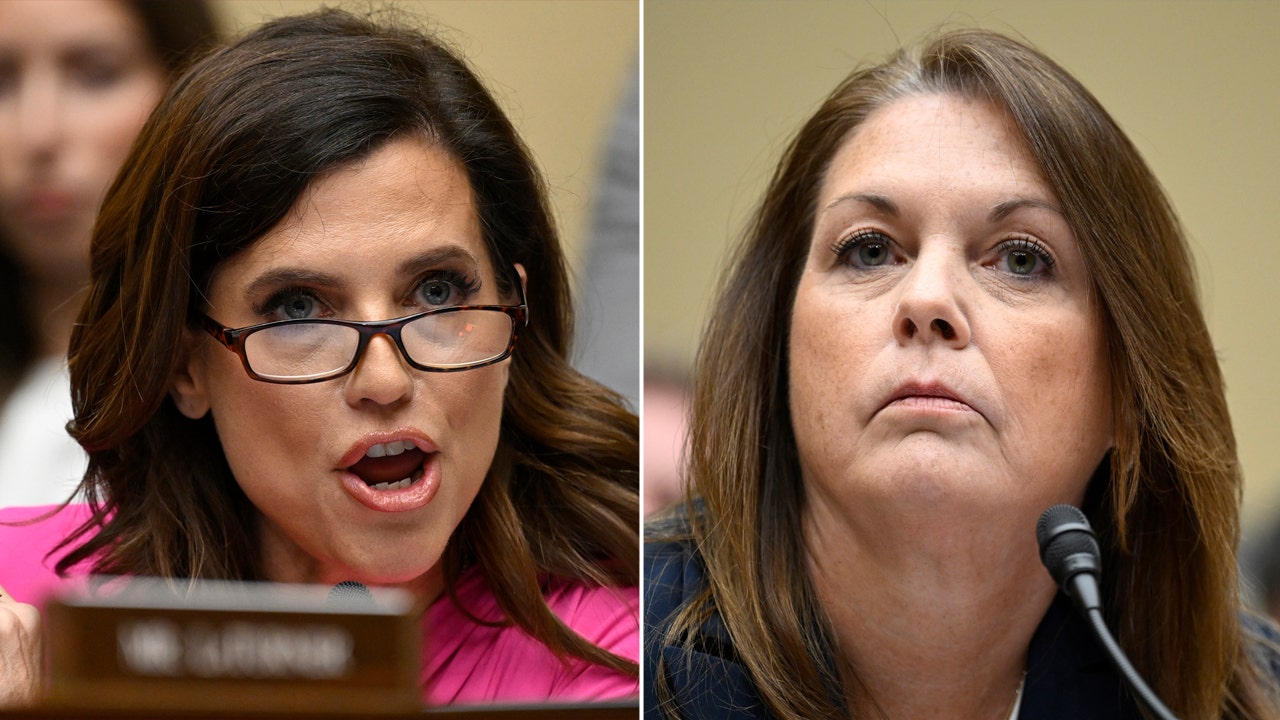North Dakota
UND receives $200K grant toward lowering maternal mortality in North Dakota

GRAND FORKS — UND has been awarded $200,000 from the U.S. Department of Health and Human Services to improve clinical care for pregnant and postpartum people across North Dakota.
The money will be used to hire a full-time staff person to work directly with the region’s hospitals through the North and South Dakota Perinatal Quality Collaborative, directed by Andrew Williams, an assistant professor of public health at UND. The new staffer will gather information and data about the hospitals’ needs, as well as increase communication between NSDPQC and the facilities, according to Williams.
The grant money comes from the Alliance for Innovation on Maternal Health program, which aims to reduce high maternal mortality rates in the U.S. by promoting safe care for every birth. UND, as well as its program partner institution South Dakota State University, are two of 28 institutions to receive the funding.
The NSDPQC is already involved with seven hospitals in North Dakota and eight in South Dakota, covering 81% and 65% of the births in those states, respectively, Williams said. The new grant money will allow the NSDPQC to conduct needs assessments at those birth facilities to determine gaps in care over the next four years.
“We’ll be using these (Health Resources and Services Administration) dollars to identify what the hospitals need to make sure that these quality improvement projects are working well for them,” Williams said. “Maybe things like assistance with some of their data, maybe some additional training and knowledge, collaborating with other hospitals to find out what other people are doing that are successful, those types of things.”
He anticipates NSDPQC’s role will be to help implement changes and provide technical assistance to hospitals while the hospitals themselves lead the conversation in terms of what their needs are. Those needs will likely vary by facility, he said.
“We have the big hospitals covered — the Altrus, and the Sanfords, you know, they do most of the births in the state — but we want to make sure that some of the smaller facilities that are providing their services are also enrolled as well,” Williams said. “We know that there’s a difference between the hospitals and the patient populations that they see. … So working within the state, we know there’s a kind of different experience at the hospital level as well.”
The first trend NSDPQC hopes to address is substance abuse among pregnant people in North Dakota, a number that has risen in recent years, Williams said.
Nationally, an estimated 7 to 8% of pregnancies are complicated by substance use, but that’s likely an underestimate due to reporting issues. However, smoking during pregnancy tends to be a good indicator of additional substance use during pregnancy, and smoking data tends to be much more reliable, Williams said. That number in North Dakota is around 10 to 12% of pregnant people — and Williams believes that’s a much better estimate of the rate of substance abuse during pregnancy.
“We think it’s at least that high, probably a little bit higher in our region,” he said. “And that obviously has a range of complications for both the mom and the baby as well.”
In the coming years, his team also hopes to address barriers to care in the state, especially disparities in rural and urban populations as well as racial and ethnic disparities.
“It’s been pretty persistent in our region,” he said. “And we just want to try to find a better way to address some of those, but we know it’s going to be a pretty big challenge.”
Hannah Shirley is the managing editor for the Grand Forks Herald. Shirley previously covered cops and courts for the Herald. They are a 2018 graduate of the University of Idaho, and prior to working for the Herald worked as a reporter for the Berkshire Record in Great Barrington, Massachusetts. Shirley can be reached at hshirley@gfherald.com.

North Dakota
Pressures could lead to more closures at ND nursing homes

BISMARCK — Federal requirements for nursing homes to have a registered nurse on duty 24 hours each day are expected to add pressure to an already challenging workforce situation for the 75 rural and urban facilities across the state.
A majority will have a hard time meeting the 24/7 requirement for RNs, according to the North Dakota Long Term Care Association.
Nikki Wegner, director of the NDLTCA, said most facilities across the state are currently well-staffed except for that RN requirement.
Cost pressures have already led to six facilities closing in the past 35 months, she said.
“We’ve never had that before in our history, and the majority of them were because of staffing issues,” Wegner said.
Urban facilities have until May 2026 to comply with the federal requirements, while those in rural areas have until May 2027.
Rules have also changed, with areas like Dickinson, Devils Lake, Jamestown, Valley City and Williston no longer considered rural, meaning they’ll need to meet requirements sooner.
“I worry about how many facilities might have to close because they can’t meet the standards,” said Reier Thompson, president and CEO of Missouri Slope in Bismarck, which has long-term care for over 250 residents.
“What’s that going to do to access to care, especially in the more rural area, where people are traveling 100 miles from their hometown to a nursing facility, and maybe a spouse is commuting that a couple times a week?” he said. “It’s going to be hard, especially in winter.”
Throughout the COVID-19 pandemic, staffing full-time nurses and nursing assistants at long-term care facilities became a huge challenge. Many turned to short-term contract nurses, and costs soared.
The situation has begun to turn around for Jill Foertsch, administrator at St. Gerard’s Community of Care in Hankinson. St. Gerard’s has added new certified nursing assistants while reducing the use of contract nurses from eight just a short time ago to two.
“We have improved significantly,” Foertsch said.
That being said, finding enough RNs to meet the new requirement is going to be tough.
“We are not able to meet the 24/7 staffing mandate,” she said.
The situation may mirror what happened during the pandemic, but contract RNs are in short supply and high priced, she said.
The one caveat is this time there’s no funding on the horizon.
“We will not be getting any help from the government like we did during COVID, and that’ll be what would most likely help us to shut down, because it’s just not sustainable that way,” Foertsch said.
The NDLTCA estimates contract nurses accounted for around $73 million of statewide nursing costs in 2023, up from around $24 million in 2020.
Staffing at nursing homes in the state is also now around 1,200 workers below what it was in early 2020 numbers, according to the NDLTCA.
The NDLTCA estimated that only 35% of urban facilities and only 14% of rural facilities would currently meet the future 24/7 RN staffing requirement.
Right now, most facilities rely on a mix of RNs, physician’s assistants, nurse practitioners or physicians through phone or telehealth if an RN isn’t on duty beyond the normal daytime shift. Finding RNs to fill overnight and other shifts is going to be difficult.
No funding is earmarked for those shortfalls, the numbers of RNs are just not available, and no pipeline is in the works to increase the availability of RNs.
“We’re still in a workforce crisis, we still rely on a lot of contract nurses, and it’s expensive, and then you add the mandate on there to increase even more,” Wegner said, adding that the state needs at least 80 if not more RNs to fulfill the mandates.
Several states have already met stringent requirements for waivers from the rule, but Wegner isn’t hopeful North Dakota will qualify.
Blake Kragnes, administrator at the 85-bed Knife River Care Center in Beulah, said his nursing home has been able to keep staffing at a good level, but the mandate of the 24/7 requirement for RNs is going to be tough to meet.
“When you look at the number of college grads graduating with a nursing and RN degree, it’s down, and that makes it complicated to meet a mandate that comes with no funding,” he said.
Kragnes is looking at how to increase recruitment and retention by connecting with area high schools to start people in a health care career that may lead them to full-time registered nursing status.
Foreign nurse visa freeze
One avenue most facilities are trying to use is immigration, but the U.S. State Department recently froze EB-3 visas used by foreign nurses for the rest of the fiscal year, leaving around 10,000 foreign nurses in limbo until resolved.
A cap of 40,000 visas for foreign nurses has been in place since 1990, and legislation to increase the cap stalled in the U.S. Congress after its introduction in November 2023.
According to the Migration Policy Institute, international nurses account for around 16% of the nursing workforce in the country.
National health care nonprofit KFF, formerly known as The Kaiser Family Foundation, estimates that 1 in 6 of the 3.2 million RNs in the U.S. is an immigrant nurse.
Amy Kreidt, administrator of St. Luke’s Home in Dickinson, which operates an 88-bed long-term care facility, echoed Foertch’s comments by saying the mandate coupled with the high cost of contract nursing could put more rural nursing homes out of business.
“Right now we’re not (in danger of closing), but if we can’t start getting nurses here, we have to keep that as an option and review,” she said.
St. Luke’s has had success with its foreign nurses, but the visa freezes and annual caps, along with the complicated immigration process, have led to it taking up to four years to get foreign nurses, Kreidt said.
“And that’s if it goes through relatively quickly, and it seems to always have taken that long, but now, with additional delays, it will continue to take that long and longer,” she said. “The contact is only three years long and it takes over four years to get them, so the numbers don’t add up.”
LeAnn Hokanson, vice president of resident services at Missouri Slope, said besides funding to cover nursing costs, there is a major need for both immigration and on expanding nursing programs.
“The (foreign nurses) that we’ve been interviewing most recently, they’ve been waiting and waiting and waiting,” she said. “Some of them wait for 10 years to get their call to have a facility interview them. It’s all stuck in that visa process.”
Contributed / Missouri Slope
Kreidt has previously tapped into the nursing program at Dickinson State University, but with its entire full-time nursing faculty resigning on July 10, the future of that program is uncertain.
The situation also adds further uncertainty regarding the nursing pipeline for health care facilities across the state and region.
North Dakota’s new Office of Legal Immigration is looking to pilot a cap-exempt H-1B visa program in the next several months specifically for foreign nurses, according to a study it released in late May.
This could help increase the numbers of RNs and nurse practitioners, though hurdles exist since the H-1B immigration process is more costly and facilities need to meet eligibility requirements.
This story was originally published on NewsCoopND.org
______________________________________________________
This story was written by one of our partner news agencies. Forum Communications Company uses content from agencies such as Reuters, Kaiser Health News, Tribune News Service and others to provide a wider range of news to our readers. Learn more about the news services FCC uses here.
North Dakota
South Dakota Democratic delegates unanimously endorse Harris as presidential pick • South Dakota Searchlight

The South Dakota delegates to the Democratic National Convention met virtually Monday night and voted unanimously to endorse Vice President Kamala Harris as their nominee in the 2024 presidential race.
South Dakota Democrats hopeful, not yet ready to endorse Harris as presidential nominee
In voting to endorse Harris, South Dakota Democrats fell in line with other state and national Democratic leaders who quickly followed the lead from President Joe Biden, who dropped out of the 2024 race via social media Sunday afternoon and endorsed Harris as his successor shortly thereafter.
Democrats in Nebraska, Maryland, Florida, New Hampshire, Alabama, North Carolina and Virginia were among the states where Democrats backed Harris as of Monday evening.
Harris has also picked up endorsements from key leaders at the national level. California Gov. Gavin Newsom, mentioned as a possible Democratic contender himself, endorsed Harris quickly on Sunday. Former House Speaker Nancy Pelosi endorsed Harris Monday. Senate Majority Leader Chuck Schumer and House Minority Leader Hakeem Jeffries had not endorsed Harris as of Monday evening, but Jeffries said earlier in the day that Harris had “excited the House Democratic Caucus and she’s exciting the country.”
Late Monday evening, the New York Times, CNN and other national media organizations reported that Harris had secured the backing of more than the 1,976 delegates needed to win the nomination in the first round of voting at the Democratic National Convention in Chicago next month. The news came by way of a poll from The Associated Press, which broke the story.
The poll listed 2,668 delegates pledged to Harris and 54 undecided as of 10 p.m. CST Monday.
The Democratic National Committee will move forward with the process to formally nominate a presidential candidate Wednesday when its Rules Committee meets in a public virtual session amid ongoing efforts to set up a virtual roll call vote ahead of the convention next month in Chicago, according to reporting from States Newsroom.
South Dakota Democrats backed Biden with around 75% of the vote in the state’s June 4 primary. In a news release, the South Dakota Democratic Party announced that its 20 voting delegates to the August convention had voted unanimously to back Harris.
“We thank President Biden for his leadership throughout his career and for choosing Kamala Harris four years ago to be his Vice President,” said Delegate Chair Jessica Meyers. “Harris has proven that she is more than equipped to take on the Presidency and we as a delegation are looking forward to casting the official vote for her.”
GET THE MORNING HEADLINES DELIVERED TO YOUR INBOX
North Dakota
Tuesday is Military Appreciation Day at the ND State Fair

MINOT, N.D. (KMOT) – This is a reminder for servicemembers and their families that the North Dakota State Fair is continuing its long-standing tradition of honoring those who serve with a special Military Appreciation Day on Tuesday.
Military members and their families can enjoy lunch from 11 a.m. until 1 p.m. at the north festival tent.
The event is sponsored by the N.D. Beef Commission, N.D. Stockmen’s Association, and N.D. CattleWomen.
They can also enjoy free carnival rides from 1 p.m. to 3 p.m., half-off unlimited ride wristbands, and $2 off go-cart rides.
Copyright 2024 KFYR. All rights reserved.
-

 Politics1 week ago
Politics1 week agoTwo key states to see massive GOP voter registration operation
-

 News1 week ago
News1 week agoShooting at a Trump Rally in Pennsylvania: Maps and Photos
-

 News5 days ago
News5 days agoVideo: Young Republicans on Why Their Party Isn’t Reaching Gen Z (And What They Can Do About It)
-

 News6 days ago
News6 days agoIn Milwaukee, Black Voters Struggle to Find a Home With Either Party
-

 World6 days ago
World6 days agoOne dead after car crashes into restaurant in Paris
-

 News1 week ago
News1 week agoVideo: Biden Asks America to ‘Lower the Temperature’
-

 World1 week ago
World1 week agoUkraine: shelling in Kherson leaves at least two people dead
-

 World4 days ago
World4 days agoFreshers' week in Strasbourg for new EU lawmakers















